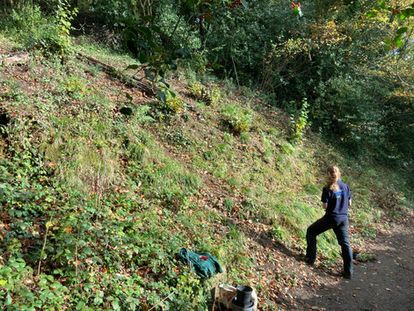Flies
43 species of fly have become extinct in England in the last 200 years, 10 of which are shown below

Species: Belida angelicae
Extinct: 1936

Species: Clitellaria ephippium
Extinct: 1850
© John Reinecke
© Hectonichus


STARVED WOOD SEDGE
Carex depauperata

A unique sedge, and at one time this was considered the rarest plant in the UK.
-
Rarity: there are only 2 native sites in the south of England with a further 3 re-introduction sites.
-
Cause of decline: Loss of woodland management.
Background
Starved Wood-sedge (SWS) once had the dubious honour of being the rarest plant in the UK, when just a single plant existed in a site near Cheddar Gorge in Somerset. Then, after the great storm of 1987 the plants made a dramatic return to their only known site in Surrey.
For the last decade we have been carrying our extensive habitat management work in Surrey and Somerset and these populations now both number over 100 plants. Meanwhile we have introduced plants back to Charterhouse, Cranborne Chase and Cheddar Woods; all sites where the species was found over a 100 years ago.
Since then the species had sadly been lost from its last site in Ireland, and has dwindled in perilously low numbers in both its remaining native sites.
Ecology and Conservation
Despite not being the showiest plant in our portfolio, Starved Wood-sedge is a striking member of the sedge family, forming large drooping tussocks on woodland banks. Mature plants can grow relatively large, with the inflorescent spreading out to almost one metre.
Experimental work at our first re-introduction site revealed that the plants thrive in much higher light levels than previously thought, so much of our work has been modifying the canopy at all its sites, combined with managing the associated rise in competitive ruderal plants with the rise in sunlight.
It has the largest utricles (seeds) of any of our native sedges, but despite their size it often seems to favour vegetative spread through rhizomes, meaning plants seldom travel far.
Our Work
Our work on Starved Wood-sedge has focussed on creating and maintaining optimal woodland habitat at the two native and three re-introduction sites. This takes the form of annual scrub control, combined with occasional canopy reduction.
All five sites require constant watching briefs - the two native sites are situated on woodland edge adjacent to footpaths, and are threatened by a huge array of potential and real threats (including fly-tipping, re-surfacing, pollution and erosion).
Eventually we would like to see all five sites supporting self-sustaining populations, managed by larger scale general woodland management work (coppice and ride management) resulting in the populations slowly spreading under their own steam.






